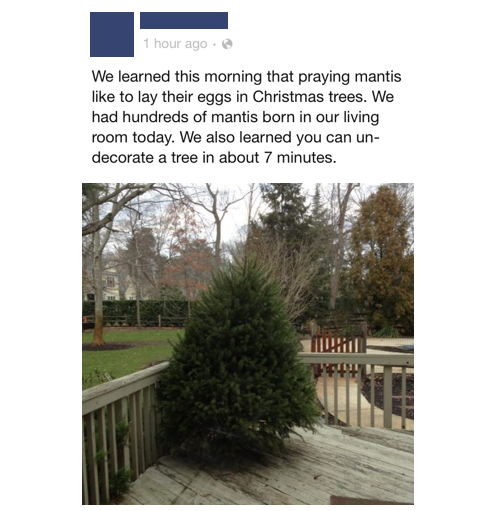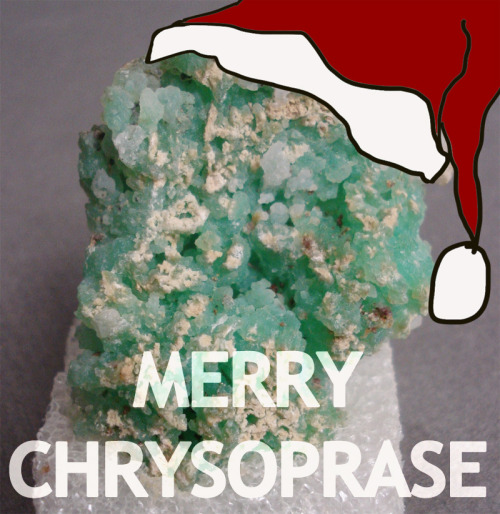Miscellaneous thoughts on politics, people, math, science and other cool (if sometimes frustrating) stuff from somewhere near my favorite coffee shop.
Saturday, January 5, 2013
Geo 365: Jan. 5, Day 5: Guano Valley
It looks like our first rain of the year (aside from a brief, light sprinkle on Thursday) is coming in today, so I thought I'd put up something a little dry. Okay, very dry.
Looking eastward across Guano Valley to "Doherty Slide." Route 140 turns abruptly south, and runs diagonally right up the cliff face. While not terribly obvious at this scale, if you click on the photo for full-size, it should be apparent. While the road is brilliantly engineered, with a lot more room than you realize, the first time up or down this stretch is very disconcerting. However, once you accept that you're not going to die, the views from that grade are spectacular.
This area's main geologic claim to fame (aside from being fabulously gorgeous) is that it is the source of the USGS Andesite Standard, AGV-1. I've not seen the exact location of where it was collected, but it would make sense that it might well be right along the road- perhaps even at the wide pull-out that I've often stopped at. In addition, there is a hang glider launch area at the top of the grade that is apparently quite famous.
Photo unprocessed. Augst 19, 2011. FlashEarth location (approximate).
Looking eastward across Guano Valley to "Doherty Slide." Route 140 turns abruptly south, and runs diagonally right up the cliff face. While not terribly obvious at this scale, if you click on the photo for full-size, it should be apparent. While the road is brilliantly engineered, with a lot more room than you realize, the first time up or down this stretch is very disconcerting. However, once you accept that you're not going to die, the views from that grade are spectacular.
This area's main geologic claim to fame (aside from being fabulously gorgeous) is that it is the source of the USGS Andesite Standard, AGV-1. I've not seen the exact location of where it was collected, but it would make sense that it might well be right along the road- perhaps even at the wide pull-out that I've often stopped at. In addition, there is a hang glider launch area at the top of the grade that is apparently quite famous.
Photo unprocessed. Augst 19, 2011. FlashEarth location (approximate).
Friday, January 4, 2013
Geo 365: Jan. 4, Day 4: 20,000
The dock ripped out of a Japanese harbor by the tsunami following the Tohoku earthquake. It crossed the Pacific Ocean in the following year, and grounded late last spring at Agate beach, at the north end of Newport, Oregon. Dana and I visited it in July. Yaquina Head dominates the background, and the road down to the quarry cove "tidepools" can be seen over the left end of the dock.
I was not prepared for my reaction to seeing this; I kept tearing up, and had a difficult time speaking without my voice cracking. My comment to another visitor was "20,000 people died to send us this message. We should pay attention to it."
Photo unprocessed. July 10, 2012. FlashEarth location (approximate; dock has been removed now. Some sections have been saved to display as memorials.)
Followup, 6:13 PM PST: There's another dock ashore near Forks, Washington. This one is not as accessible, and it's on a rocky shore rather than a sandy beach. The winter waves are not being kind to it. A photo gallery was just posted.
I was not prepared for my reaction to seeing this; I kept tearing up, and had a difficult time speaking without my voice cracking. My comment to another visitor was "20,000 people died to send us this message. We should pay attention to it."
Photo unprocessed. July 10, 2012. FlashEarth location (approximate; dock has been removed now. Some sections have been saved to display as memorials.)
Followup, 6:13 PM PST: There's another dock ashore near Forks, Washington. This one is not as accessible, and it's on a rocky shore rather than a sandy beach. The winter waves are not being kind to it. A photo gallery was just posted.
Thursday, January 3, 2013
Geo 365: Jan. 3, Day 3: Devils Churn
Devil's Churn, at Cape Perpetua State Park. The rock is Yachats Basalt, and composed of breccias and dikes in this area. The Churn is developed and eroded along a small fault, and I'm standing over a sea cave eroded into its end. While this is a spectacular spot, caution is warranted. The rocks can be slippery, and if you were to fall in, the only way out is to fight the turbulent water to the end of the head. I've always felt this would be a wise spot for a coil of rope for emergencies. On the other hand, I've never heard of any accidents here. Dana for scale in upper left. Photo unprocessed (other than rotating it). September 21, 2010. FlashEarth Location.
Wednesday, January 2, 2013
Geo 365: Jan. 2, Day 2: My Corner of the World II
A closer view of Corvallis, from Chip Ross Park, in the Coast Range foothills north of town, looking approximately southward. Padawan Dana is near the bench, looking at the monument in the middle left. Most of the lowlands in this view are covered with a veneer of Pleistocene sediments, including Missoula Floods deposits, and modified by Holocene river processes. Underlying that is the Eocene Spencer Formation, which is the shallow water facies of the older Tyee Turbidites. However, the rock we're standing on is Siletz River Volcanics, an early Eocene oceanic plateau. This unit extends south to Roseburg, where it's known as the Roseburg Volcanics, and north to the Olympic Penninsula and southern Vancouver Island, where it goes by the name of the Crescent Volcanics. Interestingly, the rocks are older at the northern and southern ends, and youngest in the middle. This is thought to represent a hot spot on a spreading ridge; picture an amalgam of the Hawaiian Islands and Iceland.
There is a major fault along the base of this hill that runs NE to SW, the Corvallis fault, which I personally think represents an oblique-slip, but primarily strike-slip, fault. Getting a general sense of vertical offset is fairly easy, but difficult to estimate precisely due to poor exposures and folding near the fault. Getting a sense of horizontal offset is next to impossible, as far as I've been able to tell. My belief that it's primarily strike-slip comes from two lines of evidence: first, it's more consistent with the stress-strain patterns that would have been present during the mid-Neogene, and second, nearly every slickenside I've seen in and around this fault zone is close to horizontal. Another item of importance is that this fault has a wide (1000-2000 foot) crush zone of cataclastic material. Neither a normal or reverse fault with roughly 2000 feet of vertical offset would have a 1000 foot crush zone; strike-slip faults tend to have wider crush zones. I consider this supporting evidence, though, not persuasive in and of itself.
The fault is sutured in at least a few places by Oligocene intrusives, which are not broken. This suggests the fault has not moved since then, that is, for about 30 million years, and it's not considered to be a significant seismic risk.
If you visit this park, especially on a damp day (the best views are clear days in the winter, which are rare but spectacular, and in the early summer before the haze has a chance to set in and muck up the sights) watch the ditches as you drive in along the ridge line. The soils will be kind of orangey-yellow. This is a cue you're on Tyee or Spencer Formation bedrock. Just before you get to the parking lot, there's a dip in the ridge; this is where you're crossing the Corvallis Fault. In the park itself, not only are there abundant chunks of basalt float that have survived weathering and pedogenesis, but the soils are a dark brick red. Weathering goes fast in our mild, moist climate, and soil colors become a thing one pays attention to, even if, like me, your color acuity is poor.
Photo run through Paint.net's "auto-level" processor to try to cut through the haze and bring out some details. October 8, 2012. FlashEarth Location- not certain this is exactly the spot, but close enough, and I think the bench and monument are just below (south of) the cross-hairs.
Followup: Just realized you can see a color difference in the soils on opposite side of the fault in FlashEarth: Compare this (on basalt bedrock) to this (on sedimentary bedrock). The Corvallis Fault runs between these two spots in this area, and that view is backed out enough to include the other two. The color difference is even more distinct when it's damp/wet.
There is a major fault along the base of this hill that runs NE to SW, the Corvallis fault, which I personally think represents an oblique-slip, but primarily strike-slip, fault. Getting a general sense of vertical offset is fairly easy, but difficult to estimate precisely due to poor exposures and folding near the fault. Getting a sense of horizontal offset is next to impossible, as far as I've been able to tell. My belief that it's primarily strike-slip comes from two lines of evidence: first, it's more consistent with the stress-strain patterns that would have been present during the mid-Neogene, and second, nearly every slickenside I've seen in and around this fault zone is close to horizontal. Another item of importance is that this fault has a wide (1000-2000 foot) crush zone of cataclastic material. Neither a normal or reverse fault with roughly 2000 feet of vertical offset would have a 1000 foot crush zone; strike-slip faults tend to have wider crush zones. I consider this supporting evidence, though, not persuasive in and of itself.
The fault is sutured in at least a few places by Oligocene intrusives, which are not broken. This suggests the fault has not moved since then, that is, for about 30 million years, and it's not considered to be a significant seismic risk.
If you visit this park, especially on a damp day (the best views are clear days in the winter, which are rare but spectacular, and in the early summer before the haze has a chance to set in and muck up the sights) watch the ditches as you drive in along the ridge line. The soils will be kind of orangey-yellow. This is a cue you're on Tyee or Spencer Formation bedrock. Just before you get to the parking lot, there's a dip in the ridge; this is where you're crossing the Corvallis Fault. In the park itself, not only are there abundant chunks of basalt float that have survived weathering and pedogenesis, but the soils are a dark brick red. Weathering goes fast in our mild, moist climate, and soil colors become a thing one pays attention to, even if, like me, your color acuity is poor.
Photo run through Paint.net's "auto-level" processor to try to cut through the haze and bring out some details. October 8, 2012. FlashEarth Location- not certain this is exactly the spot, but close enough, and I think the bench and monument are just below (south of) the cross-hairs.
Followup: Just realized you can see a color difference in the soils on opposite side of the fault in FlashEarth: Compare this (on basalt bedrock) to this (on sedimentary bedrock). The Corvallis Fault runs between these two spots in this area, and that view is backed out enough to include the other two. The color difference is even more distinct when it's damp/wet.
Geo 365: Jan. 1, Day 1 My Corner of the World
So yesterday was a lazy hazy day, and another that was confusing to Bif. As on Christmas, he was expecting me to leave anytime; every time I'd get up or even shift in my chair, he'd run for the door to play our daily game of "Can I get out without him catching me?" I watched Batman Begins, which I hadn't seen before. Mixed feelings. Liam Neeson is definitely kick-ass. Katie Holmes, who I'd never seen outside of tabloid type reports, didn't really work as a tough-as-nails DA, IMO. And the "superweapon" that is central to the climax was absurdly wrong- my guestimate for its power consumption is in the trillions to quadrillions of watts. In other words, in excess of the power consumption of the entire human race. With no cord. And no explanation of why it didn't just vaporize the water in every living creature in range, but rather selectively delivered that energy to the water supply inside metal pipes. Gah.
At any rate, this morning, I noticed that Ian Stimpson , AKA Hypocentre, is finishing up his "Rock 366" series- a rock photograph for every day of 2012. If you haven't been following it, and you enjoy gorgeous rocks, gorgeously photographed, that link is highly recommended. You can click each photo for a much-enlarged version, along with some information on the specimen. And I thought, well, I can't match his photographic skills, but I'll bet I can find 365 photos of interesting geology for the next year.
Some will be photos I've posted before, hopefully with some tidbits of new information. Some will be of poor quality, but show some interesting features. I'll focus heavily on Oregon, since almost all of the photos I currently have are from within the state. As such, expect plenty of volcanics, not so much metamorphic stuff. (Oregon does have some metamorphic belts, but on my recent geogalavanting, we've only visited a couple corners of them.) I don't even promise I'll carry it through to the end. Ian says that it becomes a plodding struggle, and I tend to throw my hands up at those.
By and large, I'm looking for inspiration and motivation to post something every day, even if I have a minimum to say about it, even if it only takes me a couple minutes. I know I have enough photos to pull this off, but I don't know if I have enough *interesting* photos.
We'll see, won't we?
Looking west from near the intersection of I-5 and Route 34. Corvallis is 9 or 10 miles away, between this spot and Marys Peak. The latter is the high point of the horizon, and rises to just over 4000 feet (the valley floor here is a bit over 200 feet). Marys Peak is the best transect of Coast Range geology I know of, and consists of a base of sea floor and hot spot basalts, overlain by a fairly restricted pile of sediments derived from those basalts when they rose above sea level. That in turn is buried under a thick- though in the area of the peak itself, mostly removed by erosion- pile of Eocene turbidites, the Tyee formation. Then in the Oligocene, a thousand-foot thick sill was intruded near the base of the turbidites. That thickness, along with its composition and high volatile content, allowed compositional fractionation during its cooling, which is readily observable in the field, and quite striking microscopically. Picture processed to increase saturation and contrast. August 17, 2011. FlashEarth location.
At any rate, this morning, I noticed that Ian Stimpson , AKA Hypocentre, is finishing up his "Rock 366" series- a rock photograph for every day of 2012. If you haven't been following it, and you enjoy gorgeous rocks, gorgeously photographed, that link is highly recommended. You can click each photo for a much-enlarged version, along with some information on the specimen. And I thought, well, I can't match his photographic skills, but I'll bet I can find 365 photos of interesting geology for the next year.
Some will be photos I've posted before, hopefully with some tidbits of new information. Some will be of poor quality, but show some interesting features. I'll focus heavily on Oregon, since almost all of the photos I currently have are from within the state. As such, expect plenty of volcanics, not so much metamorphic stuff. (Oregon does have some metamorphic belts, but on my recent geogalavanting, we've only visited a couple corners of them.) I don't even promise I'll carry it through to the end. Ian says that it becomes a plodding struggle, and I tend to throw my hands up at those.
By and large, I'm looking for inspiration and motivation to post something every day, even if I have a minimum to say about it, even if it only takes me a couple minutes. I know I have enough photos to pull this off, but I don't know if I have enough *interesting* photos.
We'll see, won't we?
Looking west from near the intersection of I-5 and Route 34. Corvallis is 9 or 10 miles away, between this spot and Marys Peak. The latter is the high point of the horizon, and rises to just over 4000 feet (the valley floor here is a bit over 200 feet). Marys Peak is the best transect of Coast Range geology I know of, and consists of a base of sea floor and hot spot basalts, overlain by a fairly restricted pile of sediments derived from those basalts when they rose above sea level. That in turn is buried under a thick- though in the area of the peak itself, mostly removed by erosion- pile of Eocene turbidites, the Tyee formation. Then in the Oligocene, a thousand-foot thick sill was intruded near the base of the turbidites. That thickness, along with its composition and high volatile content, allowed compositional fractionation during its cooling, which is readily observable in the field, and quite striking microscopically. Picture processed to increase saturation and contrast. August 17, 2011. FlashEarth location.
Monday, December 31, 2012
My Favorite Posts of 2012
There are a number of year's end memes that go around each year, but rather than playing any of those, I'm just going to put up a list with links to my posts of the previous year which I most enjoyed writing, and which give me the most pleasure to go back and read. With the exception of the 6/15 and 12/26 posts, and, arguably (though not persuasively as far as I'm concerned), the 6/9 post, every one of these has a strong geology focus. Gee, hooda thunk it?
Given the increasing difficulty of my previous computer dealing with increasingly unstable updates to Firefox-even though it still does fine with everything else besides Firefox- I didn't even put up my first post until April. With the arrival of a new computer in the late summer, blogging became practical again. In addition, visits from Padawan Dana in March, July and October have provided diverse fodder for writing and photos. Of 16 selected posts, half of them are results of my geogalavanting about Oregon with her.
Happy New Year, all! And may the new year bring you much joyous geogalavanting!
4/12: March 2012 Coastal GeoGalavant, Part I
4/21: March 2012 Coastal GeoGalavant, Part II
5/31: AW #46: Geology, Life and Civilization- Chaotic Feedback
6/9: Twice in a Lifetime
6/15: How the Internet Works
7/26: Quartzville Road Log
9/6: The Little Robot That Could... Visits Miranda!
10/5: Vegetation Gradient
10/13: Geogalavanting Around Oregon with Dana
10/14: Geogalavanting Around Oregon with Dana Part II
10/15: Geology at Oregon State University (And do click through on the links to see all of Dana's glorious photos! Links were added later, so you may have missed those.)
10/21: Cheshire Cat! The Whole Story
11/28: AW #52: Geology Dream Course
12/13: #ObscureGeoHazards
12/20: Bring on the Geopocalypse: Accretionary Wedge #53
12/26: Bif's Best Christmas EVAR!
Runners up: This series was tedious to plow through, but I was happy with the outcome. A reconstruction of my presentation for the Oregon Master Naturalists program in September.
Part One
Part Two
Part Three
Part Four
Part Five
Given the increasing difficulty of my previous computer dealing with increasingly unstable updates to Firefox-even though it still does fine with everything else besides Firefox- I didn't even put up my first post until April. With the arrival of a new computer in the late summer, blogging became practical again. In addition, visits from Padawan Dana in March, July and October have provided diverse fodder for writing and photos. Of 16 selected posts, half of them are results of my geogalavanting about Oregon with her.
Happy New Year, all! And may the new year bring you much joyous geogalavanting!
4/12: March 2012 Coastal GeoGalavant, Part I
4/21: March 2012 Coastal GeoGalavant, Part II
5/31: AW #46: Geology, Life and Civilization- Chaotic Feedback
6/9: Twice in a Lifetime
6/15: How the Internet Works
7/26: Quartzville Road Log
9/6: The Little Robot That Could... Visits Miranda!
10/5: Vegetation Gradient
10/13: Geogalavanting Around Oregon with Dana
10/14: Geogalavanting Around Oregon with Dana Part II
10/15: Geology at Oregon State University (And do click through on the links to see all of Dana's glorious photos! Links were added later, so you may have missed those.)
10/21: Cheshire Cat! The Whole Story
11/28: AW #52: Geology Dream Course
12/13: #ObscureGeoHazards
12/20: Bring on the Geopocalypse: Accretionary Wedge #53
12/26: Bif's Best Christmas EVAR!
Runners up: This series was tedious to plow through, but I was happy with the outcome. A reconstruction of my presentation for the Oregon Master Naturalists program in September.
Part One
Part Two
Part Three
Part Four
Part Five
Sunday, December 30, 2012
Sunday Funnies: Self Esteem Edition
Bizarro
"Every. Damn. Time." Sober in a Nightclub
"I'm not a morning person." Sober in a Nightclub
Bits and Pieces
Pygalgia
Funny to Me
Wil Wheaton's Tumblr
The expressions of a cat left outside in the rain are priceless. Tastefully Offensive has more.
What Would Jack Do? We now have a national ban on assault breasts...
Tastefully Offensive
Medium Large
Bits and Pieces
Very Demotivational
"Meowio" Tastefully Offensive
Sofa Pizza
Buttersafe
What Would Jack Do?
Bits and Pieces
Tastefully Offensive
I agree. Rocks trump everything. Are You Talking to Meme?
Cyanide and Happiness
On Circulation



 Wil Wheaton's Tumblr
Wil Wheaton's Tumblr
"Why I need to use safety goggles." What Should We Call Grad School?
Ugliest Tattoos
xkcd
"When new students ask me for advice on grad school." What Should We Call Grad School?
Sofa Pizza
Senor Gif
Fake Science
Funny to Me
"When I know the answer to a question in lecture" What Should We Call Grad School?
"After hours of counting melt inclusions." Geology is Hard
Hammer for Scale
Funny to Me
Bits and Pieces
Tastefully Offensive
"Every. Damn. Time." Sober in a Nightclub
"I'm not a morning person." Sober in a Nightclub
Bits and Pieces
Pygalgia
Funny to Me
Wil Wheaton's Tumblr
The expressions of a cat left outside in the rain are priceless. Tastefully Offensive has more.
What Would Jack Do? We now have a national ban on assault breasts...
Tastefully Offensive
Medium Large
Bits and Pieces
Very Demotivational
"Meowio" Tastefully Offensive
Sofa Pizza
Buttersafe
What Would Jack Do?
Bits and Pieces
Tastefully Offensive
I agree. Rocks trump everything. Are You Talking to Meme?
Cyanide and Happiness
On Circulation




"Why I need to use safety goggles." What Should We Call Grad School?
Ugliest Tattoos
xkcd
"When new students ask me for advice on grad school." What Should We Call Grad School?
Sofa Pizza
Senor Gif
Fake Science
Funny to Me
"When I know the answer to a question in lecture" What Should We Call Grad School?
"After hours of counting melt inclusions." Geology is Hard
Hammer for Scale
Funny to Me
Bits and Pieces
Tastefully Offensive





































